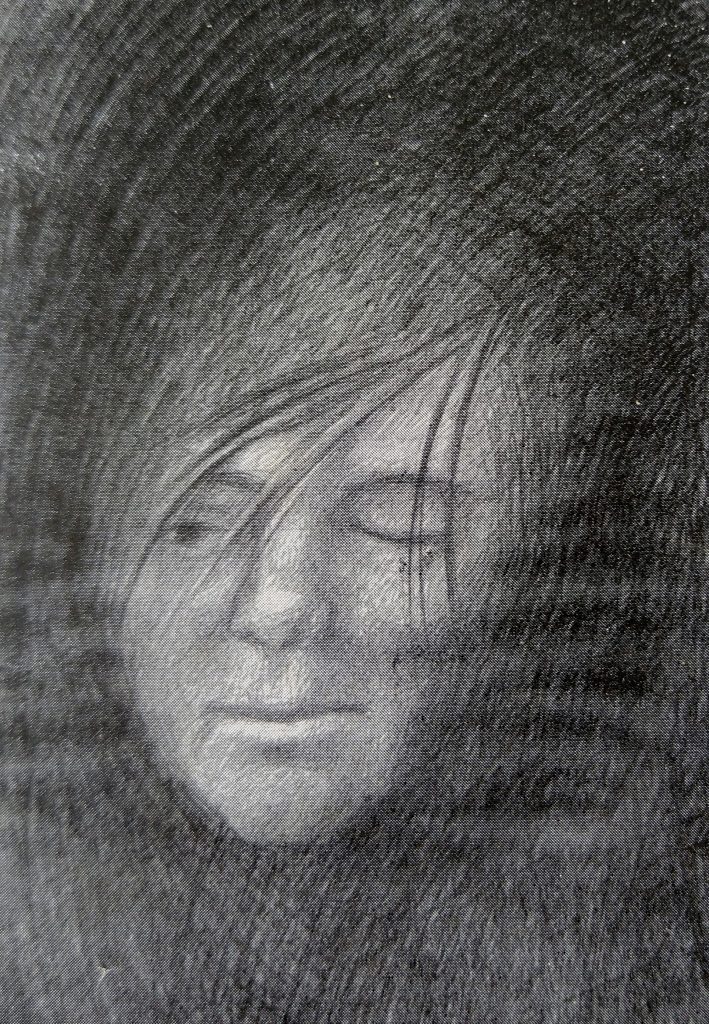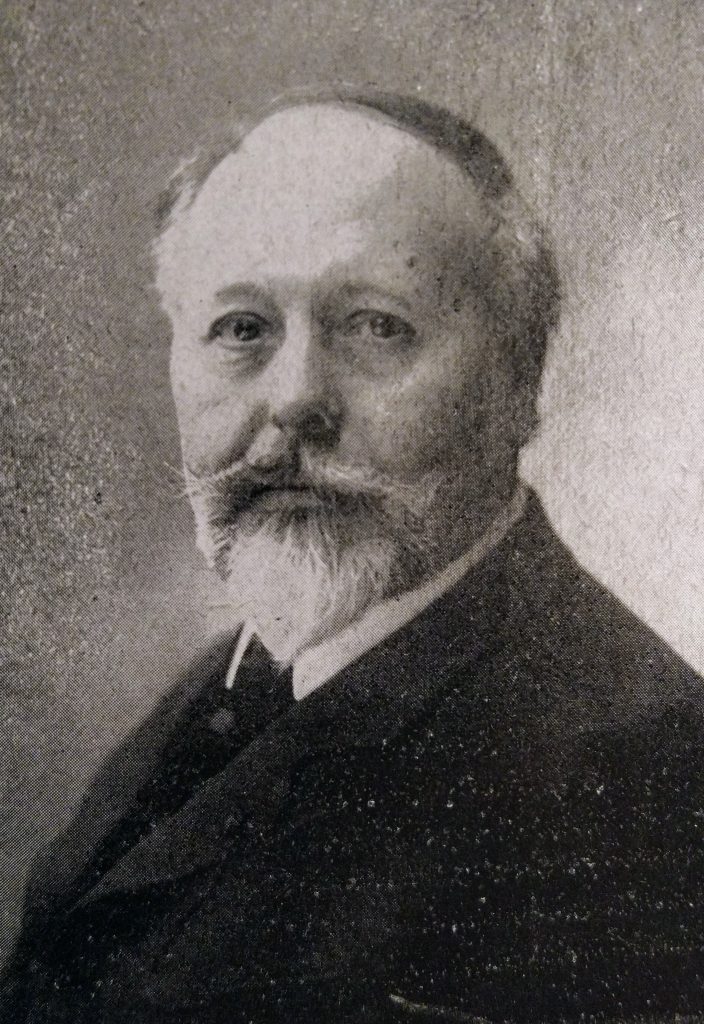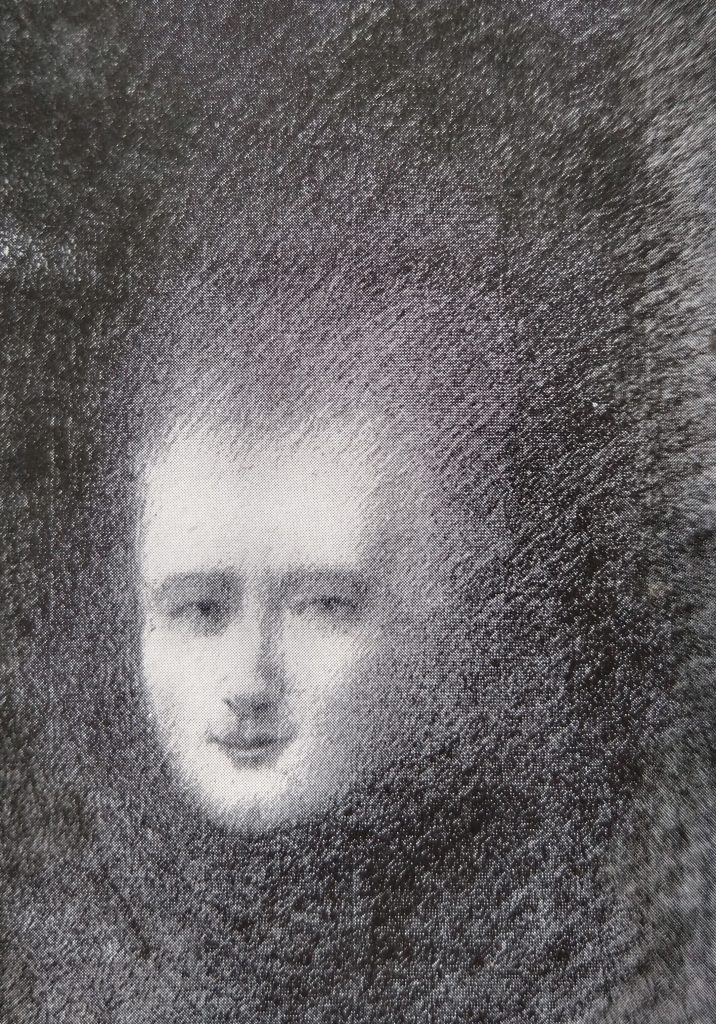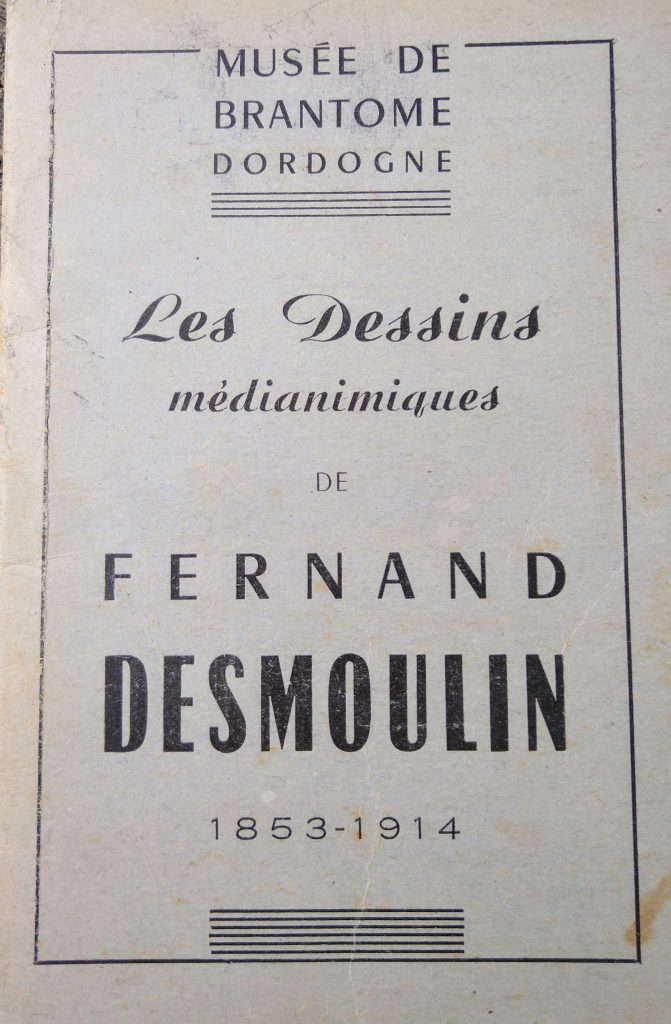

Fernand Desmoulin (1853-1914) 
Les Dessins Medianimique de Fernand Desmoulin is a small booklet that describes Desmoulin’s involvement with Spiritualism and automatic drawing. It was published after his death for the occasion of an exhibition of his drawings at the Musée de Brantôme in the Dordogne, France. This text has been translated from the original catalogue.
Fernand Desmoulin, born in 1833, in Javerlhac (Dordogne) and died in Venice in 1914, was an engraver of great talent, and a highly esteemed painter. A number of exhibits at the Brantôme museum come from a donation made by his widow. The painter R. Dessales-Quentin, whose talent is appreciated not only in France, but also abroad, was elected responsible for organizing the Brantôme Museum, of which he is also the curator.
Fernand Desmoulin, who was very well known in Parisian high society (he was a great friend of Emile Zola) did not initially believe in spiritualism when leading people like Professor Richet of the Academy of Medicine, the astronomer Camille Flammarion, the famous writer Victorien Sardou, Colonel de Rochas etc. were very active.
One day Desmoulin was at a friend’s house whose children were busy “turning a table” in an adjacent living room. After a while, the young people called their father for help because they couldn’t keep the table on its feet. Desmoulin and his friend approached and supported it with all their might, but the table resisted and finally broke. Afterwards Desmoulin’s thoughts were dominated by the fact that an unknown force actually existed. When he got home, he sat down at his desk, his hand unintentionally took a pencil and began to draw lines. The following days, renewing the experience, his hand traced round. Then he realized that he was doing strange drawings. Little by little these drawings were transformed and became pictures of which a great writer friend said they were more “states of souls” than paintings. From this day on, driven by a curiosity that has increased steadily, he multiplied the experiments and thus produced, under a mysterious influence a lot of varied drawings mainly representing faces and exceptional landscapes or other subjects. Some of his drawings were accompanied by writing, short notes and signatures. The first drawings thus obtained formed a series signed ‘The Teacher’. The drawings that followed formed another series bearing the signature ‘The Old Master’. Finally, the last series is signed: “Astarté”.
It must be emphasized that by engaging in these experiences, Fernand Desmoulin never wanted to give an explanation of the phenomenon in which he was the unconscious object. Leaving it to others to unravel the physiological or psychological aspects of the drawings. German scholars having knowledge of his experiences came to ask him to operate in front of them. They demanded that he have a go with a bag tied around his head. He never did a more beautiful drawing than during this demonstration. Wanting to push the experiment further, he used watercolour crayons and even engravings. He operated better in the darkness than in the daylight. The designs were perfect, some done upside down, but still just as correct. All of this was deeply troubling and will not seek more than he did a hypothesis about the phenomena of which Fernand Desmoulin was the object, it is best for the audience to make an opinion. It is for this purpose that we reproduced typical examples of these drawings.
From April 15 to 30, 1901, Fernand Desmoulin did show his drawings to the general public, through an exhibition organized at the Galerie Georges Petit, well known to artists of that time. It included a hundred pieces, some of which belonged to Parisian celebrities. These medianimic drawings caused a sensation in artistic circles as well as in occult circles. Following this exhibition, the review ‘La Vie Illustree’ published a long article written by Henri de Weindel, on the enigma that was posed by these drawings. We extract the following interesting passage:
“I arrived this morning At Monsieur Desmoulin; the artist was busy engraving a copper plate with meticulous care. I ask him to demonstrate his experience for me. He consents to it and goes to his table, takes a sheet of paper and a pencil. Immediately the hand trembles, then jumps on the table, “Come on … Calm down … Come on .. come on …” are the soothing words, spoken by Desmoulin, his hand moves from top to bottom, with an increasingly frantic frenzy, so much so that it only presents to the eye a long white spot that we can no more distinguish than the spokes of a car wheel when dragged into a furious race. Finally, the hand calms down, and for a moment holds the point of the pencil on the paper, before it starts running, turning, twirling, without being able to see much more than before. Three minutes later the drawing is done. “Monsieur Desmoulin holds out his hand to me “See,” he said, “the pulse is steady, the temperature is normal, and no tremor occurs. Another famous literary critic, Sir Arsène Alexandre, author of monographs and other works on art history, wrote on subject of Desmoulin’s medianimic drawings: “If we examine the case of Mr. Desmoulin from a purely scientific point of view, we find the presence of a very curious and very unusual example of split personality. Usually these kinds of facts don’t have such consistent results. These results themselves dismiss any idea of deception, and we don’t even have to discuss this point, given the character of Monsieur Desmoulin, and from the point of view of simple common sense, and the little interest he would have to play a bad joke on the public and to himself.
Mr. Arsène Alexandre adds about the personality of Desmoulin: “The artist himself is a kind man, with a comely physiognomy, cordial, stable relationship, perfectly balanced, without preponderance of the nervous system.” There is a very curious fact. that it is worth reporting is that the artist was only influenced by the occult for two years. At the end of this time all manifestation ceased and never again would Fernand Desmoulin make medianimic drawings. These drawings, with their enigmatic character are documents whose true psychological or physiological value will only appear when significant progress has brought occult science to a point where it is far from having yet arrived

Looking at the etchings of Fernand Desmoulin, owned by the Brantòme museum and comparing to his medianimic drawings we immediately realize the big difference existing in aesthetic idea, the technique and the general expression. We couldn’t say that the same hand produced each other which is also quite disturbing. Apart from the productions we have discussed, we can also see Monsieur Desmoulin’s oil paintings at the Brantôme museum and when they have been exhibited for many years at the Salon of the National Society of Fine Arts where he was a member of the jury. One of these paintings which was exhibited at the 1910 Salon and depicted Perigord peasants is at the Perigueux museum. Desmoulin. born in Dordogne, honours his country of origin with the talent he demonstrated and the place he held in the artistic world of his time.
In conclusion! This short account has enabled us to mention that the city of Brantòme can, and rightly so, be proud of being able to show visitors the objects from Monsieur Desmoulin. With such prominent artists it is an artistic ensemble that makes the museum one of those places where the spirit breathes. LOUIS MERCIER (Enameller at Chancelade).
Desmoulin’s work can be found in several collections including the Fernand Desmoulin Museum, Brantôme en Périgord, Christian Berst Gallery, Paris, and the ABCD Collection, Paris.
To see more artists like Fernand Desmoulin please visit our artists page.